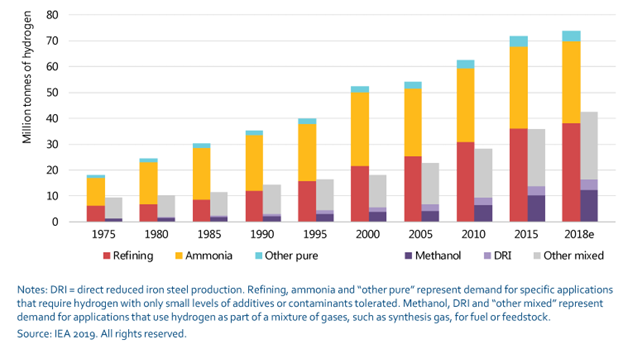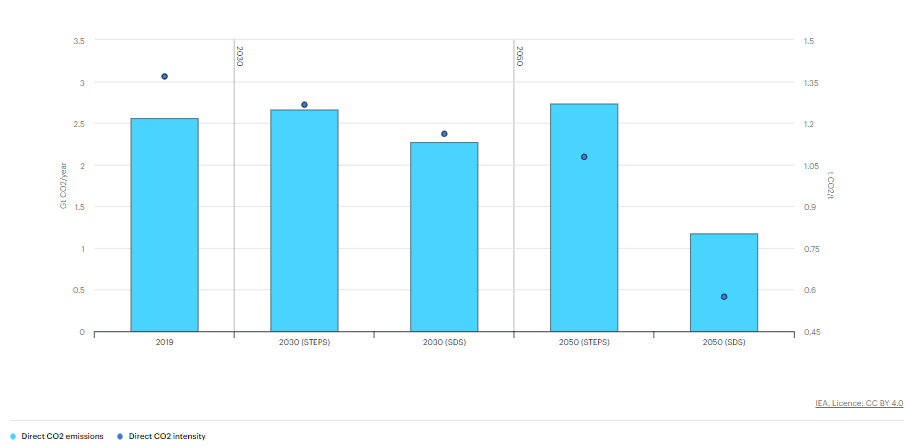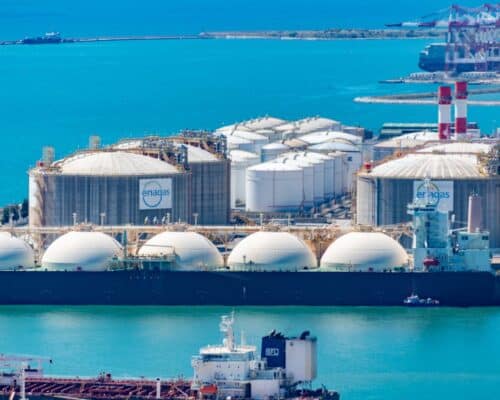The Uses of Hydrogen: A Catalyst for a Sustainable Future
Green Steel Production / unsplash.com
14 June 2023 – by Eric Koons Comments (0)
Hydrogen is a versatile element and has long been recognised for its diverse uses across various industries. However, most hydrogen production today relies on fossil fuels, leading to significant carbon emissions. Shifting the focus of global hydrogen production towards renewable energy-based hydrogen can significantly impact global decarbonisation efforts.
The Current Role of Hydrogen in the World’s Economy
Hydrogen’s applications extend across multiple sectors. According to the International Energy Agency (IEA), hydrogen demand reached 94 million tonnes in 2021. It was mainly used for refining petroleum, ammonia production and methanol synthesis. These industries heavily rely on hydrogen as a raw material, as it is an essential component of various manufacturing processes.

However, most hydrogen production relies on fossil fuels like natural gas, generating approximately 900 million tonnes of carbon dioxide emissions annually. This dependence on fossil fuel-based hydrogen exacerbates global warming and hampers efforts to reduce greenhouse gas emissions.
Green hydrogen offers a solution to this problem, potentially minimising hydrogen-related emissions and decarbonising several industries. The DOE National Clean Hydrogen Strategy and Roadmap recognises that by 2050, green hydrogen energy could create USD 2.5 trillion in annual revenue and 30 million jobs while reducing global emissions by 20%.
Current and Future Hydrogen Uses
Understanding the current and future use cases for hydrogen shows how a green hydrogen transition can impact decarbonisation efforts. Renewable energy adoption and decarbonisation will soar if each of these applications moves away from fossil fuel-based hydrogen.
Fertiliser Manufacturing
Hydrogen is a key component in ammonia production, one of the primary raw materials in fertiliser. The Haber-Bosch process, developed in the early 20th century, is still the primary method of producing ammonia. This process involves the reaction of nitrogen and hydrogen in the presence of an iron catalyst.
The utilised hydrogen mainly comes from steam methane reforming or coal gasification. As a result, ammonia-based fertiliser is responsible for 2.1% of global greenhouse gas emissions.
Petroleum Refining
Hydrogen is also critical in refining petroleum to produce gasoline and other products. This process, known as hydrocracking, involves using hydrogen to control the temperature of a reactor. First, the reactor breaks down heavy hydrocarbons into lighter ones. Then the lighter hydrocarbons become gasoline, diesel and other products. This process accounts for about 30% of global hydrogen demand.
Steel Production
One of hydrogen’s main uses is in steel production to reduce the amount of carbon in the final product. This process, known as direct reduced iron (DRI), involves the reaction of iron oxide with hydrogen to produce iron. This iron can then make steel with a lower carbon content, resulting in a stronger and more durable product.

Furthermore, steel is very energy-intensive, and coal furnaces primarily power the process. According to the IEA, steel production accounts for 8% of global emissions, and emissions from the sector must decline by 50% by 2050 to meet the world’s climate goals.
Food Processing
Hydrogen is a preservative in the food industry. It is also important when producing hydrogenated oils for many processed foods. Hydrogenated oils are created by adding hydrogen to unsaturated fats in a process known as hydrogenation. This process increases the shelf life of foods and makes them more stable at room temperature.
Chemical Production
Hydrogen is a raw material for producing a wide range of chemicals, with the majority going to methanol production. Methanol and its derivative compounds have various applications, including producing plastics, textiles and pharmaceuticals. As a result, methanol accounts for 10% of global hydrogen use.
Medical Treatment
Hydrogen has multiple uses in the medical space, from its use as a contrast agent for magnetic resonance imaging (MRI) to treating respiratory diseases. While this represents a small percentage of total hydrogen use, it is critical for the global health system.
Long-term Energy Storage and Grid Balancing
Hydrogen is not commonly used for energy storage but will have significant potential in the coming decades. It will play an important role in facilitating the use of renewable energy sources, which struggle with storing excess energy.

The excess energy generated can be used to produce hydrogen through electrolysis. This hydrogen can then be stored and used to generate electricity when needed. While batteries are currently a more common energy storage medium, hydrogen has several advantages, such as greater energy density and cost-effectiveness.
Transportation
One of the most promising future uses of hydrogen is in fuel cells for vehicles. Fuel cell vehicles (FCVs) are powered by hydrogen fuel cells, which convert hydrogen and oxygen into electricity and heat. FCVs have the potential to be more efficient and produce fewer greenhouse gas emissions than traditional gasoline-powered vehicles.
Hydrogen fuel cell-powered ships and trains are already in development and testing. Furthermore, hydrogen-powered trucks and buses have been piloted and deployed along with a sparse but growing network of fuel stations in various countries. FCVs are particularly useful for heavy vehicles and planes, which are often limited by weight, making batteries an inefficient option.
Green Hydrogen Gas Needs Support to Reach Its Decarbonisation Potential
Developing a green hydrogen economy holds an immense potential for cutting down existing emissions and accelerating the transition towards a sustainable future. By replacing fossil fuel-based hydrogen with green hydrogen, industries can significantly reduce their carbon footprint and contribute to global decarbonisation efforts. However, achieving this potential requires substantial investment in infrastructure development, technology advancements and policy support.
This is an opportune moment for private sector investment in the hydrogen sector. Governments, policymakers, international organisations and financial institutions should collaborate to foster a supportive ecosystem for the green hydrogen economy. The World Bank Group is already working with developing countries to accelerate green hydrogen projects. At the same time, the Hydrogen Energy Earthshot initiative, launched in 2021, aims to stimulate private sector investments in innovation and scale.
The time to harness the power of hydrogen is now. Global cooperation is vital to the long-term success of green hydrogen and global decarbonisation goals.
by Eric Koons
Eric is a passionate environmental advocate that believes renewable energy is a key piece in meeting the world’s growing energy demands. He received an environmental science degree from the University of California and has worked to promote environmentally and socially sustainable practices since. Eric’s expertise extends across the environmental field, yet he maintains a strong focus on renewable energy. His work has been featured by leading environmental organizations, such as World Resources Institute and Hitachi ABB Power Grids.
Read more
